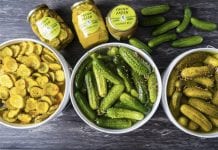By Sahar Ghaffari, LuxEco Editorial Assistant
After recently writing an article about Justin Timberlake’s newly reopened green golf course, Mirimichi, I began to dig deeper into the potential hazards that non-green golf courses pose and the ultimate cost that humankind and the environment will have to pay. One of the main and most talked about dangers of golf courses in recent years, has been the use of pesticides on golf course lawns.
So what’s the big deal with pesticides? Most golf courses employ pesticides in large quantities on their greens and fairways (in repeated treatments) in order to prevent pest problems. Rather than modifying their treatments to tackle specific problems, courses spray a cocktail of pesticides on their lawns; however this can lead to a dependency on the pesticides, in turn, necessitating more pesticides and a higher health risk to the public. In fact, one course in Long Island, New York was found to use four to seven times the average amount of pesticides used in agriculture, on a pound per acre basis.
These pesticides are not only a health danger to workers of golf courses or golfers, but to any nearby areas as well. Runoff and airborne drift carry the pesticides to close by neighborhoods and water sources and “pose health risks, both acute and chronic, from common cold like symptoms, nausea, dizziness, headaches, rashes, to birth defects, learning disabilities, infertility, leukemia, various cancers including brain cancer, breast cancer, [and] non-Hodgkin’s lymphoma”, says Jay Feldman of Beyond Pesticides. “Asthma rates in the U.S. have skyrocketed, and there are studies linking asthma to pesticides that are widely used on golf courses.”
Click here to find out more about the 30 most commonly used pesticides and their side effects.
A few ways golf courses can change their hazardous practice of pesticide use is through organic practices such as using native vegetation and grasses which are the most adaptable to local conditions, adding buffer zones to protect water sources or sensitive areas, using an irrigation system that reuses water, and designing a course to sustain the natural wildlife, all help to maintain a healthy and clean course for all to enjoy.

















Sahar,
As i was going through the web site i came across your editorial on golf courses and the amount of pesticides, which is really insignificant how much they use because it is all HIGHLY TOXIC, however we have invented and produce the number Bio out-door insect control product in the world. Our cedar oil formulation is 25b 4a Federally Exempt from EPA registration, it is USDA approved ingredients, FDA food grade ingredients and meets GRAS. We were just catalogued into the USDA BIO PREFERRED PROGRAM.
Our product is as effective if not more effective than its chemical counterpart. However getting the industry/landscape/golfcourses from listening to the big chemical companies and their lobbyist is a different story. This is the battle we fight everyday with big business and the amount of pesticides they use as we already have the organic solution. Our product is being used around the world in the Agriculture industry from row crops to vineyards to citrus and nut farms without any toxic chemicals at all. It is safe around water, soil, children, adults and all animals small and large.
So why won’t they use it? Because everytime we raise our voice they seem to either get the EPA, USDA or the FTC involved to throw sometype of ridiculous new policy, regulation or lawsuit on our company. Example: We just introduced it into the premium grape growers association in N. California at their recent meeting, they all want it (like yesterday) however Monsanto had given a meeting to the lower grape growers in the valley a few days prior and we believe they heard about our meeting and even attended it and out of no where (after the introduction of our products at their meeting) the state of California is now requiring us to get a asteric by our cedar oil in the list of organic products by the EPA for not carrying a residual. Can you believe they are allowing these toxic chemicals to continue to be sprayed but not let our 100% Bio product not be sprayed until this asteric is on the list. This takes time (possibly months) and thousands of dollars, just another way to keep the small organic products out of the market.
Anyways i thought you just might like to hear that their are products and companies out here fighting the fight everyday with real solutions that the big industries simply will not tolerate and do anything they can within their power to keep you out.
Visit our web site at http://www.cedaroilindustries.com or feel free to contact me at 1-210-599-0449 if you would like more information on this battle that plaques the organic industry.
Best Regards,
Bob Amarine